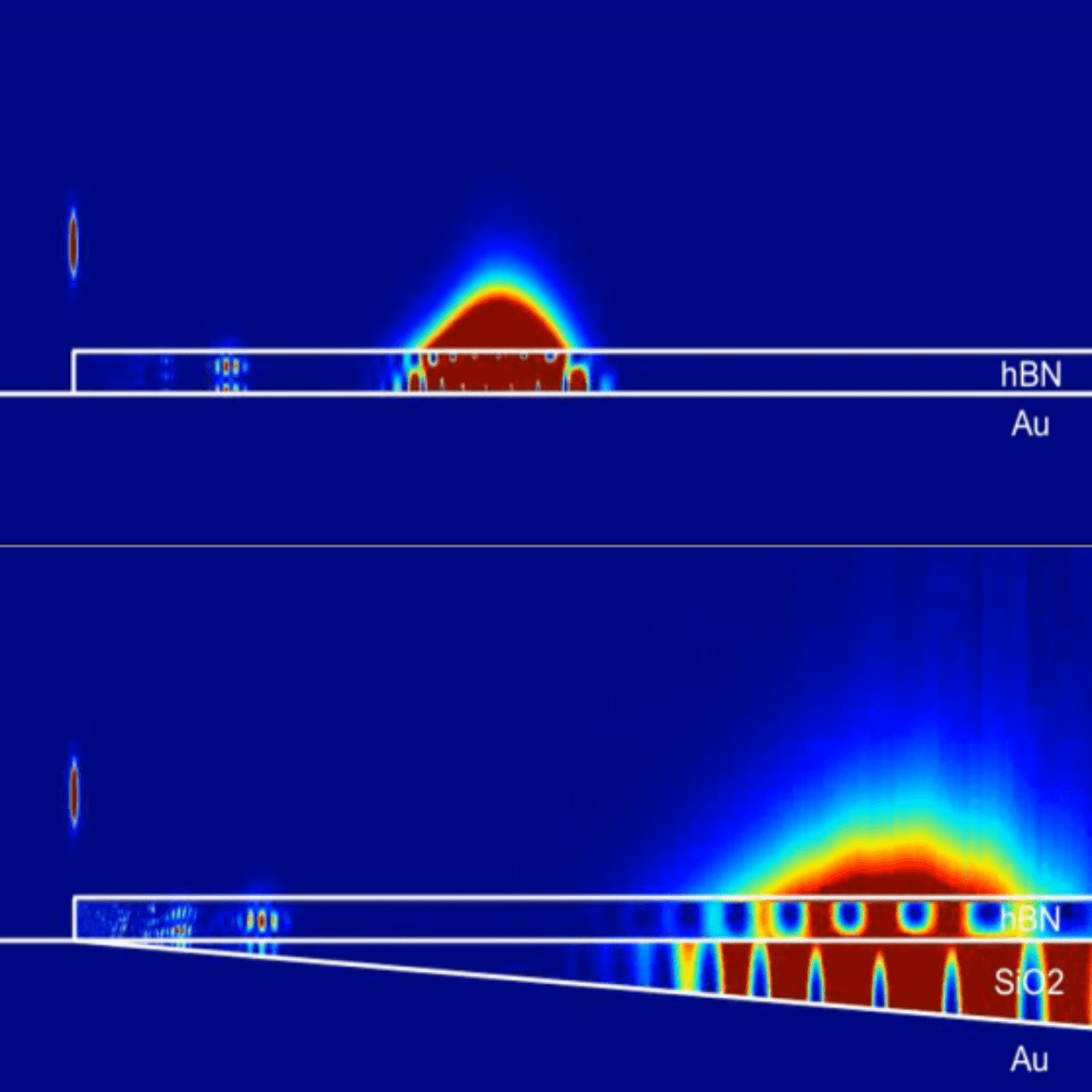
Research explores wave-particle duality to accelerate light in a two-dimensional crystal using functional substrates
The understanding of light and its interaction with materials was, in the last century, an important way for scientific discoveries. A prominent example is the photoelectric effect: the emission of electrons by materials when subjected to the incidence of light at certain wavelengths. Wave theories already explained the behavior of light in many optical phenomena, but were not able to fully explain the characteristics of the photoelectric effect. The explanation for this phenomenon, as proposed by Einstein, required that the energy associated with light could only assume well-defined values, said to be discrete or quantized, that is, light should also have properties normally associated with particles.
Thus, due to the photoelectric effect and other phenomena that demanded a corpuscular behavior of light, the concept of wave-particle duality emerged, which served as a basis for the development of what is understood today as quantum mechanics. The knowledge provided by quantum mechanics about matter at its most fundamental level is what makes possible the development of transistors, lasers and so many other technologies essential for today’s society.
When light passes through and interacts with certain materials, it can behave together, or coupled, with other phenomena that happen therein, for example, the collective oscillations of atoms and molecules, called phonons, or the collective oscillations of electrons, called plasmons. These collective oscillations also have particle-like properties and are therefore called quasiparticles. When coupled to these quasiparticles, the light propagates in the material in the form of hybrid quasiparticles called phonon-polariton and plasmon-polariton, respectively.
Researchers at the Brazilian Synchrotron Light Laboratory (LNLS) investigated the wave-particle character of light confined in two-dimensional crystals of nanometric thickness. Hexagonal boron nitride (hBN) crystals were deposited on functional substrates formed by a gold ($\rm Au$) layer covered by a thin silicon dioxide film ($ \rm SiO_2 $). The studied light appears in the form of phonon-polaritons originating from the coupling of an infrared photon with a vibrational resonance caused in the hBN crystal by the incident photon itself.
Phonon-polaritons have the ability to confine light because they have wavelengths many times shorter than those of the excitation photons. Therefore, being electromagnetic waves of sub-wavelength, the phonon-polaritons, together with the plasmon- and exciton-polaritons are the main forms of light existing in the two-dimensional materials.
The group experimentally investigated the hBN phonon-polarities using the synchrotron infrared nanospectroscopy (SINS) technique, which combines high-brightness and wide spectral coverage of infrared light produced in a synchrotron light source with a nano-probe with spatial resolution to detect the optical field of the polaritons.
The research demonstrated, first, the modulation of momentum and group velocity of polaritons in the hBN by controlling the thickness of the film $ \rm SiO_2 $ in the hBN / $\rm SiO_2$ / $\rm Au$ heterostructures. Then, the acceleration of a pulse of polaritons traveling in the hBN crystal supported on a wedge of $ \rm SiO_2 $ carved in the film of $ \rm Au $ was presented. There were, to date, no reports on the acceleration of these polaritons. The researchers explained that the gradual variation in the thickness of the dielectric in the wedge induces changes in the momentum of the polariton – wave property – which, in turn, changes its effective mass – corpuscular property – causing the pulse speed to increase. These effects are general for any type of polariton and reveal the interesting quantum aspect of these quasiparticles.
According to the researchers, the observations contribute to increase the control over the confined light in nanometric materials, and to the future development of ultra-compact two-dimensional optoelectronic devices.

Increase in the speed of the polaritonic pulse through the modification in its dual wave-particle character induced by a functional substrate: the momentum of the associated wavepacket decreases with the increase in the thickness of the $SiO_2$ wedge leading to a reduction in the effective mass of the pulse.
Source: [1] Flávio H. Feres, Rafael A. Mayer, Ingrid D. Barcelos, Raul O. Freitas, and Francisco C. B. Maia, Acceleration of Subwavelength Polaritons by Engineering Dielectric-Metallic Substrates, ACS Photonics 2020 7 (6), 1396-1402. DOI: 10.1021/acsphotonics.0c00563
Research reveals new mechanisms and strategies to break plant polysaccharides and generate interesting by-products
Researchers achieve unprecedented details of the shape, composition and preservation of microfossils